Long Toss Part 1 – Does it Strengthen Your Arm ??
Since it has been a long time between writing articles I figured that I owed everyone who reads this site a great series of articles that tackles a hot topic in the baseball world;
LONG TOSS
- Does long toss strengthen your arm?
- Will it increase your risk of injury?
- Does throwing further mean you can throw harder?
These are some of the questions that I hope to shed some light on in this series of articles that is going to be at least 3 parts, maybe more by the time I’m done. Part one will talk about what long toss is and more importantly what it isn’t just so we are all on the same page. Part two will dive into the research that’s out there on long toss and break it down into Layman’s terms. In the final part I will try to piece everything together and give some of my thoughts about how and when to implement long toss.
So here we go, lets start with what long toss isn’t.
Long Toss is NOT Pitching
Long toss allows you get a running start and throw the ball up at a 45 degree angle. Check out Vlady and his pre-game long toss.
Pitching requires that you have to start from a stationary position and throw the ball at a slight down angle in order to hit the strike zone.
Obviously they are different from one another.
The ability to throw the ball far is great because that most likely means that you have the ABILITY to throw hard but that’s only one part of the game. In order to succeed at any level you need the SKILL to change speeds and pitches while hitting your spots.
Let’s look at golf for example. Who would you pick to win a round of golf Rory Mcllory or Tim Burke? For those of you who don’t know Tim Burke, he is the 2013 long drive world champion and he can drive the ball 427 yards!!!
Rory only averages 310 yards which isn’t bad (3rd on tour) but it’s over a 100 yards shy of Mr. Burke. The problem for Tim Burke is that they are competing in golf and not a long drive competition which is why I would pick Mcllory to win in a head to head battle. Golf requires a lot more than just a long drive. Being long off the tee certainly helps but as the saying goes “you drive for show and put for dough”. With pitching our putting is hitting spots while mixing speeds and pitches. After all just look at what happened to Happy Gilmore in one of the best movies of all time. Once he worked on his short game he was able to defeat the evil Shooter McGavin and win back his grandmother’s house.
Both you and your pitching coach need to figure out where your strength’s and weakness’ as a pitcher are in order to figure what you should be doing more of in order to succeed on the mound. Just because you can throw far doesn’t mean you know how to pitch.
Why Are You Long Tossing?
If you ask this question to any player you’re probably going to get this answer:
I am trying to strengthen my arm!!!
Anytime we talk about strength we should be talking to the experts: strength coaches. In an ideal world long toss is where there should be some overlap between the pitching coach and the strength coach. I’ve been fortunate enough to be both which gives me a unique perspective on the subject.
Since we have heard many pitching coaches give us their thoughts on long toss I thought I would take more of a strength coach approach to the subject.
Long Toss is Just a Tool
If someone wants me to help improve their throwing velocity I do a full assessment and then I use my training tools according to the athletes needs in order to achieve this goal. There are plenty of tools out there to help improve throwing velocity like weight training, stretching, weighted balls, long toss and plyometrics to name a few. The secret of good coaching and improving throwing velocity is to know what tool you should be using because there is no one size fits all approach. You also need to know how to properly use each tool otherwise you might get hurt.
Thanks to the work of Alan Jaeger long toss has become an extremely popular tool in recent years and when anything becomes popular enough there are going to be people that try to tear it down and we end up with a pendulum effect.
This is a term I learnt from the strength & conditioning world because there always seems to a new training tool or philosophy that burst onto the scene and becomes very popular. Think of things like high intensity interval training (HIIT), Swiss Balls, Kettlebells or any other fitness related product that you might have seen on an infomercial . Some tools become so popular that trainers will only use this one particular tool for their entire workout. Following a certain period of popularity there is usually a back lash that may or may not be driven by some type of research that denounces this particular tool and its supposed benefits. Trainers and athletes then stop using this tool all together.
After a while the pendulum stops swinging back and forth and the tool in question finds its resting place. Smart strength coaches however recognize that every tool has its purpose and it become part of their arsenal and will use this tool when the situation calls for it. Good coaches have big tools boxes and know exactly when and how to use each tool.
As far as tools go long toss is pretty powerful and can provide benefits all by itself but when it is used in conjunction with others tools like weight training and mobility training the results can be even better. We have to realize that there are a lot of tools out there at our disposal and it is our job as coaches to select the right one.
If all you know is long toss it’s like being a handy man that only knows how to use a hammer and if you only know how to use a hammer everything starts to look like a nail. This means that players are sometimes forced into long tossing when another tool might be a better fit for the job.
Not the Right Tool for the Job!!!
Long Toss is a Form of Exercise
As a strength coach I have a lot of tools in the form of exercises to get the job done. Exercises can be classified into one of three categories depending on their intended effect on the neuromuscular system according to Dan Baker (a very smart Australian Strength Coach).
- General Exercises
- Special Exercises
- Specific Exercises
So what kind of exercise is long toss? To answer that lets look at these three categories in greater detail.
1. General exercises are those that we most commonly associated with the weight room and their goal is to increase the maximal force producing capabilities of the muscles that we need to throw. We need strong legs to throw hard so exercises like lunges and squats can be classified as “general”. This category has the biggest selection of exercises to choose from and because of that we must look at the risk vs. reward aspect of every exercise we select in order to maximize our training time in the weight room.
“Generally” Speaking this is a great exercise!!!
2. Special exercises are more closely related to the actual athletic act and can be thought of as exercises that convert strength into power. For throwing its exercises that might include jumping or med ball throws. While there are a lot of exercises in this category we have to select those that have a chance of producing some type of carry over from the weight room to the mound – this was basically the subject of my master’s thesis.
Just like with general exercises we have to weigh the risk vs reward aspects of each exercise. Olympic weight lifting is an exercise that would fall under this “special” category. As a player or coach you have to ask yourself if the risk of hurting your wrists and elbows along with the time needed to learn the Olympic lifts PROPERLY out weight the potential increase in force production that you would gain.
3. Specific exercises are similar in specific motor pattern, muscle recruitment, temporal sequencing and firing frequency to the actual act of throwing a baseball. Long toss would fall under this category as would weighted ball throwing. The amount of exercises that fall under the “specific” category are limited and as result they tend to get used a lot.
Great throwing programs use tools from all three categories and they are designed to work off of each other. The strength you build with the general exercises is converted into power with the special exercises and then that power needs to be displayed in a specific manner to the pitching act which is where specific exercises come in.
Now that we know that long toss is just a tool/exercise that we can use to improve our throwing velocity we need to learn:
- Who needs it?
- When to use it?
- How to use it?
- How often to use it?
I hope to answer these questions in part three but before we do that we have to look at the actual research that has been done in the area of long toss in order to gather as much information as we can before trying to answer these types of questions.
Sincerely,
Graeme Lehman, MSc, CSCS
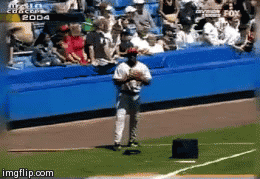
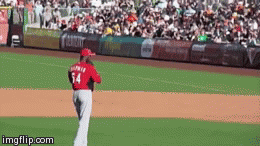

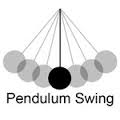
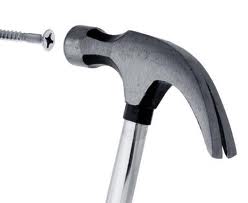
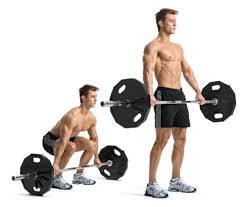

Looking forward to the series – Well articulated start, Graeme.
Thanks Bill. I have most of it written so it shouldn’t take too long to get the other parts published
Graeme